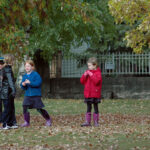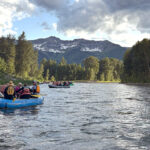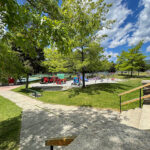Home »

Harvest allocation ensures certainty for hunters: Thomson
Forests, Lands and Natural Resource Operations Minister Steve Thomson released a revised decision on wildlife harvest allocations Feb. 6.
Conservation is the highest priority, and if there are concerns for the viability of a wildlife population then harvest opportunities will be reduced or even suspended. Allocations for resident and non-resident hunters are set only after conservation requirements and First Nations food, social, and ceremonial harvest opportunities have been met, stated a Forests, Lands and Natural Resource Operations press release.
Currently, there are 34 hunts in the province that need to be allocated between resident hunters and non-resident hunters. Initially issued in December 2014, the Feb. 6 decision revises allocation splits for the following hunts:

* Bighorn sheep and grizzly bear in the Kootenays.
* Bull elk and either sex elk on Vancouver Island.
* Moose in the Thompson and Omineca regions.
* Bison in the Peace.
Overall, the number of animals transferred to guide outfitters from resident hunters as a result of today’s decision is about 60 animals, when compared to 2014. Of the 45,700 animals harvested by resident hunters each year in B.C., only about eight percent are on allocation.
Thomson has also committed to a review of the thinhorn sheep hunt and “either-sex elk hunt” in agricultural portions of the Peace by fall 2015.

“I made slight revisions to the hunts for moose, bighorn sheep, grizzly bear, Roosevelt elk and bison to address the concerns I heard after the decision was released. I now look forward to working with the BC Wildlife Federation and Guide Outfitters Association of B.C. on ways we can all work more effectively together on wildlife management,” Thomson said.
Other elements of the December decision remain. Specifically, the wildlife harvest allocation policy ensures:
* By regionally tailoring the allocation decision, impacts on resident hunters are minimized. Resident hunters will continue to receive priority shares of the wildlife allocation, with a stable and predictable percentage.
* Vacant areas and areas not currently allocated to guides will continue to be maintained as unguided areas, and available for resident hunting.
* The decision to have clear and legislated splits for each harvest will result in less discretion in the hands of regional managers – and therefore more certainty for all user groups. Until legislative amendments can be made, the allocation splits will be set in policy.
* Targeted increased shares of allocation for guide outfitters to help ensure the guide outfitter industry remains economically viable.
The Harvest Allocation Policy Review project began in 2003. Its goal was to give certainty to both resident and non-resident user groups in how wildlife allocations were made to each group. The previous wildlife harvest allocation policy had been transitionally in place since 2007, with the most recent changes coming in 2012.
Over the last few years, ministry staff have worked closely with the BC Wildlife Federation on a number of programs and policies to benefit their members. In addition to working on a hunter recruitment strategy to increase the number of resident hunters from 82,000 to over 102,000, the ministry has done the following:
* Formed the Provincial Hunting and Trapping Advisory Committee and regional hunting committees to ensure that proposed changes to wildlife management regulations receive comprehensive stakeholder review.
* Invested more than $750,000 since 2011 in inventorying big game including deer, elk, goat, sheep, moose and caribou.
* Have undertaken a comprehensive five-year moose study that will investigate the declines, determine what is causing them and what can be done to reverse them.
* Committed to the hunter licensing transformation project, which once complete in 2016, will allow hunters to make all licensing transactions online 24 hours a day, seven days a week.
Sustainable hunting contributes over $350 million to the B.C. economy.
There are over 102,000 resident hunters in the province; up from 82,000 only 10 years ago.
There are approximately 245 licensed guide outfitters in the province employing over 2,000 people and providing services to roughly 5,000 non-residents hunting in the province each year, generating an estimated $116 million in economic activity each year, the provincial government reported.
e-KNOW







